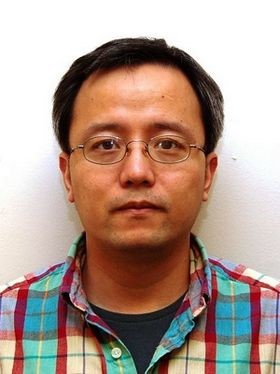
Upcoming Lectures

Upcoming Lectures
Lecture 2 DNA Origami Nanoconfinement
基于DNA折纸的纳米限制空间
日期: 2022-11-07 点击:
Speaker Bio

Hanbin Mao was graduated as a BS in 1995 in Medicinal Chemistry at West China University of Medical Sciences (now Sichuan University). He obtained an MA degree in Bioorganic Chemistry at Boston University in 1999 and a PhD in Analytical Chemistry at Texas A&M University in 2003. After spending two years of postdoctoral work in single-molecule biophysics, he started his independent research career at Kent State University since 2005. Currently he holds professorship in in Department of Chemistry and Biochemistry, Advanced Materials and Liquid Crystal Institute, and Biomedical Science Program. His research area is single-molecule biophysics and bioanalytical chemistry. His group pioneered a new interdisciplinary area, Mechanoanalytical Chemistry.
茅涵斌1995年华西医科大学药化专业毕业; 1999 年获波士顿大学有机化学硕士学位;并于 2003 年获德克萨斯 A&M 大学分析化学博士。在伯克利完成两年单分子生物物理博士后,自2005年起他在肯特州立大学工作。现任化学系、先进材料与液晶研究所及生物医学教授。他的团队开创了一个新的跨学科领域,即机械分析化学。
Abstract
DNA origami techniques provide an unprecedented path to prepare nanometer structures. Starting 2017, we have used DNA origami to construct nanoconfined space in which various molecular processes such as folding and unfolding of macromolecules, binding between ligands and molecules, and association of confined molecules with solvent molecules, can be scrutinized. We found that nanoconfinement inhibited the folding of duplex DNA while promoting the formation of DNA tetraplexes such as G-quadruplex and i-motif. We reasoned that decreased water activity is responsible for this folding variation. The decrease water activity also presages increased ligand binding in the nanoconfinement, which has been confirmed by dissecting the proximity and confinement effects between a G-quadruplex ligand and a G-quadruplex structure. Finally, we constructed a DNA origami zepto-liter reactor (zepto-reactor) in which solvent molecules such as PEG will interact with confined G-quadruplex to affect the stability of the latter. All experiments were performed by optical tweezers instrument at the single-molecular level, which offer a highly sensitive measurement unavailable to other approaches.
DNA 折纸技术为制备纳米结构提供了便捷途径。自 2017 年始,我们使用 DNA 折纸构建了纳米限制空间,用以检查各种分子过程,例如大分子的折叠和解折叠、配体与分子之间的结合以及分子与溶剂的结合。我们发现纳米限制空间抑制了双链 DNA 的折叠,同时促进了 DNA 四链体(例如 G-四链体)的形成。我们推断纳米限制空间内的水活性降低是造成这种折叠变化的原因。水活性的降低也预示着纳米限制空间中配体结合力的增加。这已通过剖析 G-四链体配体和 G-四链体结构之间的亲和力得到证实。最后,我们构建了一个DNA折纸zeptoliter反应器(zepto-reactor)。我们发现PEG等溶剂分子会与受限的G-四链体相互作用,从而影响后者的稳定性。所有实验均由光镊仪器在单分子水平上进行,这种测量手段提供了其他方法无法达到的高灵敏度。


